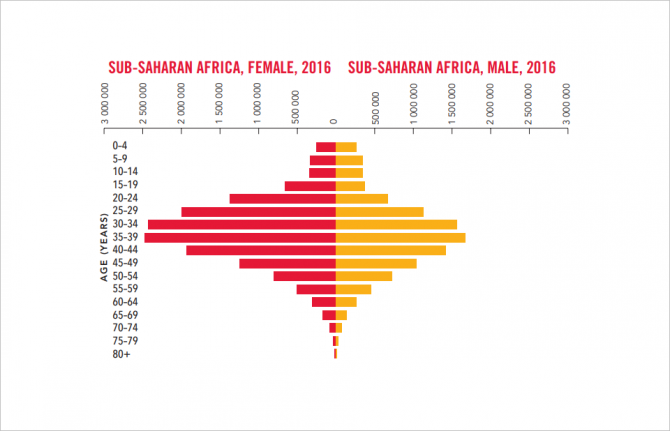

Feature Story
The youth bulge
20 July 2018
20 July 2018 20 July 2018The youth bulge is not new. Younger generations have almost always been larger than the previous generation. However, before the twentieth century, high child mortality meant that a large proportion of children did not survive to adulthood.
Huge improvements in nutrition and health services over the past 30 years have had a significant impact on population trends in sub-Saharan Africa. Thanks to remarkable decreases in child mortality—and large decreases in mother-to-child transmission of HIV—child survival rates have improved significantly.
A new UNAIDS Explainer shows the effects that the youth bulge has had on the AIDS response. As the overall number of young people has grown, and coverage of prevention services remained the same, more young people have been put at risk of HIV infection.
An analysis of UNAIDS data shows that new HIV infections among young people aged 15–24 years declined by 22% between 2010 and 2017. However, had the population size and incidence rate remained stable, the decline in new HIV infections among young people aged 15–24 years would have been 36%.
The Explainer shows the challenges of the youth bulge, explains how young people are at higher risk of HIV and calls for countries to scale up their services for young people.
The new UNAIDS Explainer series aims to inform readers about key or emerging issues in the AIDS response. With recommendations for programme managers and advice for national responses, they are short but informative snapshots of the current knowledge about an area of the AIDS response.
